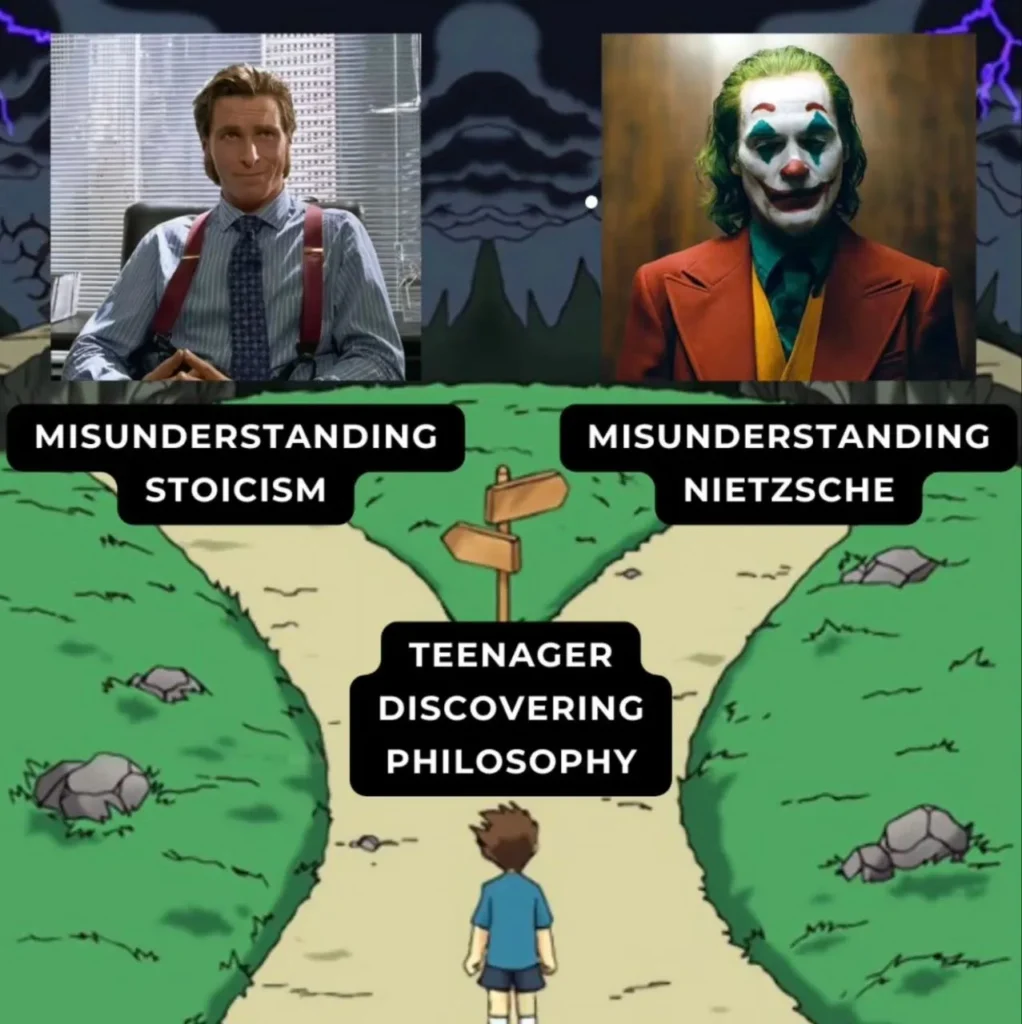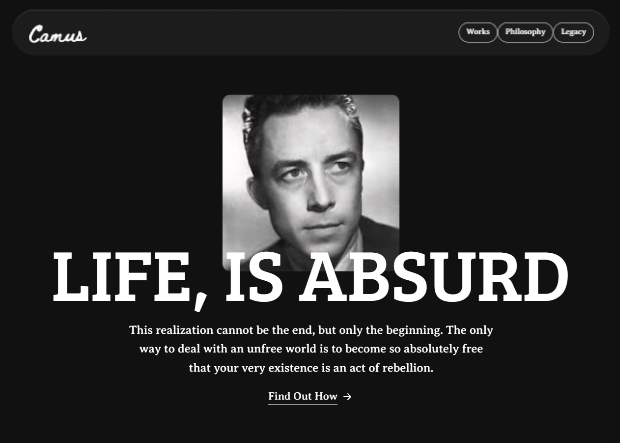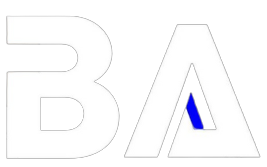Last week, I saw a meme that said when teenagers discover philosophy, they either misunderstand Stoicism or Nietzsche. And honestly? That checks out. Just scroll through the internet for five minutes.

For me, it was a bit of both. No, scratch that. For me, it was a bit of everything.
Naval Ravikant, whom I consider a personal role model, once said, “Specialization is for insects.” I felt that in my bones. We’re not meant to be boxed in. As humans, we should be allowed to explore everything, experience everything, and become anything. Because… why not?
That’s why I don’t pledge loyalty to any single ideology or system. I borrow freely from Stoicism, Nihilism, Existentialism, Zen Buddhism, Taoism, Naval’s Rational Buddhism.
I was raised in a typical African Christian household, where exploring other religions is taboo. But out of pure curiosity, I went deep into Islamic history. I know more about the Qur’an and the life of Muhammad than most non-Muslims should.
A few months ago, I took a short neuroscience course just because the brain seemed interesting. Last year, I started learning Italian after watching The Godfather and falling in love with the culture. I listen to everything from classical music (btw Vivaldi is the GOAT) to Chinese hip-hop.
The only genre I can’t vibe with is heavy metal. I’m sorry but it just sounds like what dust tastes like haha. No offence.
I consume broadly because I believe everything has something to offer. But everything also has something that sucks. So I swallow the meat and spit out the bones. It helps me stay open-minded and relatively objective.
Out of all the ideas I’ve studied, none have shaped me more than the work of Albert Camus. His absurdism, especially in The Myth of Sisyphus and The Stranger, gave me a framework for living that actually made sense. It didn’t promise meaning. It didn’t beg for faith. It just looked life in the face and said, “So what? Let’s do it anyway.”
I even read The Stranger in French and English side by side, at the same time. I don’t know why I decided to do that. But it was fun.
Camus became my favourite philosopher. And as a fun side project, I decided to design a website for him.
But before we dive into the design choices, let’s understand who this man was and what his philosophy actually meant. Knowing that will explain everything that comes after.
Who the Hell Was Albert Camus?
Albert Camus was a philosopher, writer, journalist, rebel, outsider, and the most reluctant Nobel Prize winner you’ll ever read about.
Born in Algeria in 1913 to a working-class family, Camus wasn’t raised in ivory towers like many of his intellectual peers. His father died in World War I when Camus was barely a year old. His mother was illiterate and partially deaf. He grew up poor, not the romantic kind of poor, but the kind that gives you a firsthand education in suffering.
And maybe that’s why Camus didn’t approach life like an academic. He wasn’t interested in abstract theorizing or mental gymnastics. He wasn’t trying to explain life. He was trying to live it.
That’s what made him different.
While other philosophers were busy dissecting the meaning of existence, Camus stood up and asked the one question no one wanted to answer:
If life has no ultimate meaning… should we still live it?
That’s the essence of his philosophy, Absurdism.
Absurdism says life is a contradiction. On one hand, we desperately want clarity, meaning, and order. On the other hand, the universe offers us silence. No answers. No grand plan. Just chaos. So what do we do with that?
Camus’ answer?
We rebel.
Not with violence. But with presence. With defiance.
By getting out of bed, doing our work, loving people, drinking coffee, walking in the sun, and laughing, even when nothing makes sense.
He wrote about this in The Myth of Sisyphus, where he reimagines the Greek myth. Sisyphus is cursed to roll a boulder up a hill forever, only for it to roll back down each time. Most would call that despair. But Camus imagines Sisyphus smiling.
“The struggle itself toward the heights is enough to fill a man’s heart,” he wrote.
“One must imagine Sisyphus happy.”
That line changed something in me.
It wasn’t religious. It wasn’t optimistic either. It was honest. It was… human.
Camus was also a political thinker, but he refused to be boxed in. He criticized both capitalism and communism. He opposed totalitarianism of any kind. He didn’t worship ideology. He worshipped life itself, messy, beautiful, temporary life.
In 1957, at just 44 years old, he won the Nobel Prize in Literature, becoming the second-youngest recipient in history.
Three years later, he died in a car crash.
His life was short. But his ideas lived on. They spoke to a generation that had witnessed two world wars, the Holocaust, and the atomic bomb. A generation that needed someone to tell them it was okay to feel lost in a universe that seemed to have gone mad.
Camus gave them permission to feel the absurdity without surrendering to despair. He showed them how to live fully in a world that makes no sense.
That’s who Albert Camus was. And that’s exactly the kind of man whose website deserves to be designed with the same philosophical intensity he brought to everything else.
Designing a Website for Camus
How do you capture the essence of a man who stared into the void and smiled back? How do you design for someone who found beauty in meaninglessness?
The answer came to me like Camus himself would have appreciated: through honest confrontation with the absurd.
I wanted the site to feel like Camus. Not just look like him. That meant every design decision had to come from a place of meaning. Every colour, font, and layout choice had to echo the man’s ideas, not just his biography.
Let me walk you through it.
1. Look and Feel: Simple. Clean. Elegant.
I started with the layout. I kept asking myself: What would Camus do with a website?
He wouldn’t add a carousel. He wouldn’t use trendy animations or flashy banners. He’d likely hate the idea of “optimizing for conversion.”
So I went with something simple. Elegant. Still.
A lot of white space. Clean lines. No distractions. Because silence was Camus’ canvas. In the noise of modernity, his work felt like a deep breath… and I wanted the website to reflect that.
The website needed to invite the visitor to think, not scroll endlessly.
2. Colour: I Almost Went Wild. Then I Remembered Who I Was Designing For.
At first, I had the idea to go abstract. Multicolor. Something bold and expressive to capture Camus’ concept of rebellion. You know, make it feel alive.
But that felt off.
Rebellion, for Camus, wasn’t loud. It wasn’t colourful. It was stoic. Defiant. Black-clad.
So I switched gears and went with black.
Not a trendy matte black. Not a shiny tech-startup black. Just black. Honest and serious. The kind of black that swallows distractions. The kind of black Camus wore to receive the Nobel Prize in Literature in 1957.
Black doesn’t beg for attention. It commands it quietly.
It was perfect.
3. Typography
Typography is the most underrated detail in design. It matter more than people think. If copy is your voice, typography is your tone. So I approached font selection the same way Camus approached sentences: deliberately.
- Logo Font: Beth Ellen
It’s handwritten. Loose. Personal. It makes the site feel human, not corporate. Because Camus wasn’t a brand — he was a man, wrestling with the absurd. - Headings: Bree Serif
It has strength. Solidity. But also a touch of elegance. Perfect for someone who wrote serious things with poetic rhythm. - Body: Averia Serif Libre
Slightly imperfect. A little rough around the edges. That’s what made it beautiful. That’s what made it right for Camus.
No font on this site is trying to impress. They’re just trying to say something honestly. That was the bar.
4. Copy: Philosophy as Tone
Words matter most.
And with Camus, I couldn’t just explain his philosophy. I had to honour it. That meant no hype. No empty inspiration. Just honest, clear language. Sentences that stand up straight.
His philosophy isn’t there to convert you. It’s not trying to build a movement. It just is. Like gravity.
I used short sentences. Clean structure. No sugar-coating. The tone of the site is calm but defiant, just like the man himself.
Copy should feel like a conversation, not a pitch.

In a Nutshell
I wasn’t just designing for Camus; I was designing like Camus. Each choice forced me to confront the same question he spent his life asking: In a universe that offers no inherent meaning, how do we choose to live?
The answer, I discovered, is the same whether you’re writing novels or designing websites: with absolute honesty and uncompromising authenticity.
Most designers obsess over trends, user experience metrics, and conversion rates. These things matter, but they’re not everything. What matters more is whether your design tells the truth about what it represents.
Does it honour the essence of its subject? Does it create meaning rather than just consuming attention?
Camus taught me that rebellion isn’t about being different for the sake of being different. It’s about refusing to accept the easy answers, the safe choices, the conventional wisdom.
In design, this means having the courage to strip away everything that doesn’t serve the core message. It means choosing black when everyone expects colour. It means embracing white space when the tendency is to fill every corner.
This approach works for more than just philosophical websites. Whether you’re a coach helping people transform their lives, a consultant solving business problems, or a solopreneur building something from nothing, the same principle applies.
Your brand, your website, your entire digital presence should be a philosophical statement about who you are and what you believe.
Your audience doesn’t need another pretty website. They need to encounter someone who has thought deeply about what they’re doing and why they’re doing it. They need to meet someone who has pushed their own boulder up the mountain and found joy in the struggle.
By designing for a philosopher who argued that life has no inherent meaning, I discovered that design can be one of the most meaningful acts we perform.
It’s how we take the chaos of information and transform it into understanding. It’s how we take the void of white space and fill it with intention.
Every time someone visits that Camus website, they’re not just consuming content. They’re participating in a philosophical experiment.
They’re experiencing what it means to encounter ideas that don’t try to comfort or deceive, but simply invite honest engagement with reality.
This is what your work should do too, whatever that work might be. It should invite people into honest engagement with reality… their reality, their challenges, their potential for transformation.
Thanks for reading Sitecraft! Subscribe for free to receive new posts and support my work.
Visit my store to get valuable resources on everything you need to know about websites as a solopreneur
I build websites for coaches and consultants.
If you want a website that perfectly represents you, your work, the transformation you bring, and converts high-paying clients, click the link below, pick a package that suits your business, and I’ll get to work.





